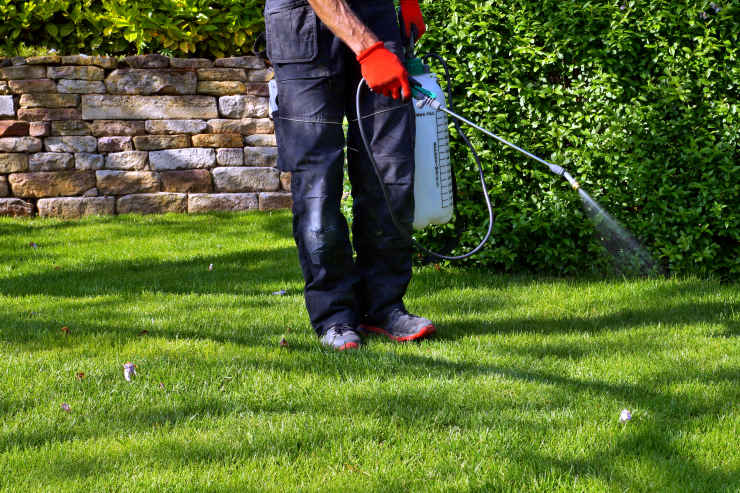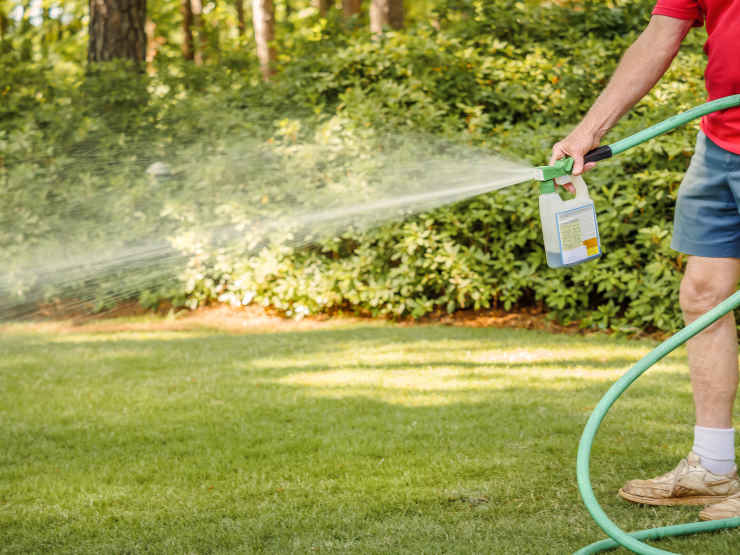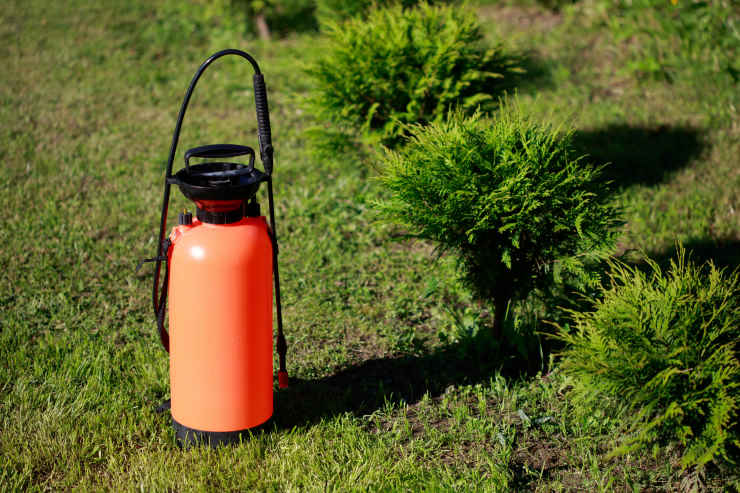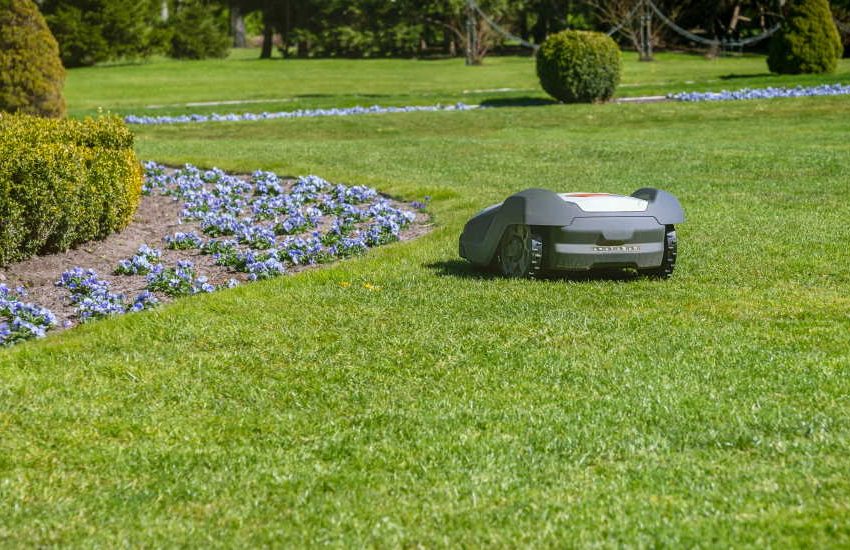How to Choose and Use Lawn Herbicides
Having a yard is one of the best things in life. You can just lay in the grass, watch the sky, watch your dog enjoy running around, and host gatherings of friends and family. While these are all beautiful things, having a lawn also has some downsides. Lawn care is not easy.
And when you add weeds into this equation, it doesn’t get easier. This is why this article will discuss how to get rid of unwanted weeds in your garden, what kind of herbicides are good and which ones are not very convenient. Of course, we will also mention how to use herbicides for proper lawn care.
When to Use Herbicides?
When weeds get out of hand to the extent that they prevent you from enjoying your green space, you may need to seek the aid of weed killers for decent lawn care. Unwanted plants in your yard can be eliminated using decent herbicides. And, to get rid of unwanted weeds, you need to use weed killers at the right time, which is when they are aggressively growing.

This denotes a start date in May and a completion date in late September or early October. Since many won’t emerge until later, it wouldn’t be wise to treat the entire lawn with herbicides early in the spring. At this stage, when you spot weeds in a particular area in your garden, it is better to treat them with your hands.
However, around May, you can start to eradicate a variety of weeds from your lawn effectively. If the treatment needs to be repeated, you still have plenty of time before the cold makes it unworkable. Make sure that repeat applications are permitted by reading the weed killer label. You will get the most out of your weed killer if your lawn is properly fertilized.
You can apply fertilizer in April for the spring and herbicides in late May or early June. Spraying for weeds should be done in the autumn 1–6 weeks after feeding. Apply the feed first, followed by the herbicides, if you notice the grass starting to bud during the summer. Just like that, you will get proper lawn care! Also, before using herbicides, you must ensure that some things meet the requirements.
For example, before using weed killers, ensure that the soil can hold moisture. In a drought, you can damage the grass. And always check the weather before applying weed killers because, after this step, grass should not be exposed to rain for at least six hours. Also, you need to use herbicides on dry grass since wetness can dilute it.
Make sure there are no harsh weather conditions like wind or extreme sunlight. So, wait for cooler hours, like evenings, to use herbicides if it’s summer. If you are using liquid herbicides on the entire lawn, wait at least two days after mowing. Lastly, avoid mowing too closely before applying weed treatment. If you cut the weeds tight and remove their leaves, there won’t be much left to spray.

How often you will need to apply weed killers, on the other hand, depends on what it says on the label of your product. Although, most brands recommend only one application per year, and if you apply them both once, you may treat your lawn twice as thoroughly. Note that this only applies to weed killers intended to cover the entire grass and is not prepared for spot treatments.
With that being said, experts say that the best thing you can do is to use two different herbicides with two distinct active ingredients in a maximum of two treatments per year. Additionally, you will probably only spray this frequently in the first and possibly the second year to eliminate weeds that have been entrenched.
If you use a spot weed killer to control weeds during the spring and summer, you’ll only need one treatment in September moving forward. Following appropriate lawn care procedures, you won’t require a full grass treatment for several years. I thoroughly treat my grass every three years, on average!
Types of Herbicides for Proper Lawn Care
There are several weed killers for lawns, gardens, and other areas where weeds may appear accessible. So, you should research to determine the finest weed killers for your lawn care circumstances. Remember, before choosing the brand or the type, think about where you’ll be using the herbicides and whether you want to preserve the life of the grass or whether you’ll be using it close to a garden.
If you want to eliminate weeds that coexist with vegetation you wish to keep, a selective weed killer can be the best option. This method eliminates particular weeds, like dandelions, while leaving the surrounding grass unharmed. However, if you are a new starter, non-selective herbicides can kill or seriously harm everything they interact with. So, of course, it’s imperative to spray non-selective weed killers with extreme caution.
Avoid using non-selective weed killers on windy days, cover plants you want to save, and avoid walking directly over sprayed areas. Another option you can use in lawn care is residual weed killers. These kill weeds at the source and keep them from sprouting. However, they may not be among the best options. Due to the soil-acting nature of residual weed killers, other plants, such as grass or flowers, will also be poisoned and killed by this technique.
Because of this, it is recommended to apply residual weed killers in confined areas far from other vegetation. For instance, this is a fantastic approach to getting rid of weeds that grow in driveway cracks. The remaining weed killers are less frequently utilized for residential applications because of their toxicity. However, you will need herbicides that penetrate to the root to eliminate perennial weeds like ragweed, poison ivy, and others that come back yearly.

In contrast to residual weed killers, systemic weed killers can accomplish this without endangering the soil. First, system weed killers are sprayed on the active weed to achieve this. The herbicide penetrates the plant’s interior, moves to the root level, and eventually kills the weed. And lastly, there is the option of contact herbicides.
Thanks to these herbicides, you can target a particular location or type of weed. For example, contact weed killers are a suitable lawn care choice for annual weeds like nettle, crabgrass, and chickweed since they operate by attacking and killing the weed without harming the root system. In addition, annual weeds can be effectively eliminated with a contact herbicide because they do not grow the following season again.
How Safe Are Herbicides for Humans?
Safety is essential in using lawn care products, especially if you have kids or pets in your household. That said, it’s impossible to say that all herbicides are safe. While many of them are not dangerous, some might be harmful to humans and animals. So, make sure to read the labels of your product carefully.
If you see the ‘Safer Product’ label, you should be fine since EPA only awards this mark to products with very little danger. However, if you see products marked with ‘danger’ or ‘poison,’ stay away from them. Then, as instructed, please wait until it rains or use the sprinkler to let the herbicide ooze into the ground, and no matter what, don’t let your family, especially your pets, before watering.
Final Verdict
To sum up, lawn care is not an easy task. However, having a lawn is the best. With that being said, now that you know what kind of product you need to use for the type of weed on your lawn, all you need to do is to be careful, read the labels, follow the instructions, wait for the right time, and enjoy the outcome.
Also, remember that some weeds serve as warning signs that you are not doing proper lawn care or your grass needs special care; for instance, moss and hydrocotyle thrive in acidic soil, frequently in areas with shade and inadequate drainage. In this situation, you can amend the soil with lime to raise the pH and make it less acidic, fork the area or fill it to enhance drainage, and trim back or thin any overhanging trees or shrubs to let in more light.
You may also be interested in:
How to Manage Your Lawn in Extreme Heat


